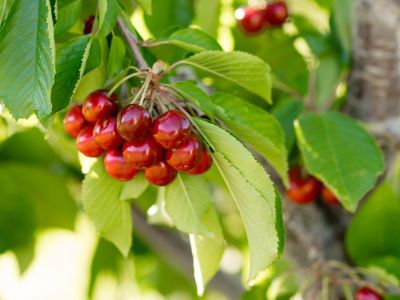Benefits of Growing Red Fruit
For years, we’ve heard the benefits of eating foods, which are rich in antioxidants. These naturally occurring compounds eliminate damage caused by free radicals in our bodies. Studies indicate this reduces our risk for developing a myriad of health conditions including cancer, heart disease and strokes. For years, superfoods like kale have been well known for their antioxidant content. But let’s face it, not everyone enjoys chewing on kale leaves. Growing red fruit is a delicious alternative and one that may be easier for your kids to swallow.
What Can You Grow in a Red-Fleshed Fruit Garden?
Can you think of any fruit that is red inside? If you said strawberries and watermelon, you’re well on your way to growing a red fruit garden. Here are a few more examples of fruits with red flesh that you might be overlooking:
Red-fleshed apples – Developed by crossing crabapples with common white-fleshed apple varieties, this novelty fruit has flesh which can vary from pink to brilliant red. Red fleshed apples are higher in antioxidants than their white-fleshed counterparts. Blood oranges – Often sweeter than their orange-fleshed cousins, blood oranges get their red flesh from the anthocyanin pigment. Orange citrus fruit that is red inside resulted from a natural mutation. Red Dragon Fruit – Also called pitaya, these fruits from cactus vines are a rich source of antioxidants. With a texture comparible to kiwi, red dragon fruit has a bright magenta flesh. Cherries – Know for their anti-inflammatory properties, cherries contain several types of antioxidants. But not all cherry trees produce fruit that is red inside. Look for varieties like Bing, Balaton or Morello. Cranberries – Second only to blueberries in the amount of antioxidants they contain, cranberries are one of the superfoods. Often considered a bog plant, cranberries can be grown as part of a red-fleshed fruit garden. Pomegranates – Grown for the bright red, fleshy arils which encase the seeds, pomegranates are a powerhouse of vitamins, minerals and antioxidants. In Northern climates, pomegranates can be added to the red fruit garden as container plants. Grapefruit – Both the ruby red and blush pink varieties of grapefruit contain more antioxidants than white grapefruit. Select dwarf varieties of these red-fleshed fruit when growing grapefruit trees in containers. Red raspberries – These easy-to-grow berries contain powerful antioxidants and are a welcome addition to any fruit garden. Choose fall-bearing red raspberries and produce two crops of this red fruit per year.
